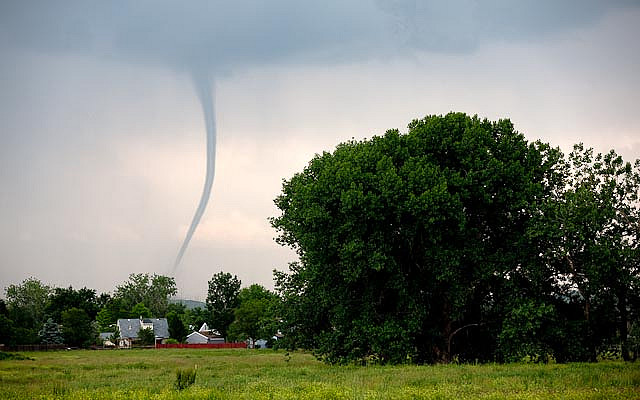Why US Is in Historic 'Tornado Drought'


The United States is in the midst of an historic drought — of tornadoes.
Since the middle of April, this is the quietest year for tornadoes in the country since the 1950s, when relatively detailed records began, said Harold Brooks, a research meteorologist at the National Severe Storms Laboratory in Norman, Okla.
The nation would expect to have 850 tornadoes on average from mid-April to the end of July, Brooks told OurAmazingPlanet. But, he said, there have been fewer than 300 to date. That's about 100 fewer than have ever been recorded in this 3.5-month stretch, he added.
Past vs. present
July was an extremely tornado-starved month , with only 24 twisters, according to preliminary data from the National Oceanic and Atmospheric Administration (NOAA). This shatters the record low of 42 tornadoes set in July 1960.
But there are two reasons why last month's record — and the broader tornado drought — are even more impressive. For one, it takes about 60 to 90 days for local weather services to confirm reported tornadoes, and on average, only 85 percent of those reports hold up, Brooks said; this is usually due to multiple reports of the same tornado. One would expect, then, that the final tally of July tornadoes will be about 20.
There were also likely more than 42 tornadoes in July 1960. Past records undercounted tornadoes; now, with a much larger population, more weather spotters, more awareness of tornadoes and better technology for reporting sightings, we find more twisters.
Get the world’s most fascinating discoveries delivered straight to your inbox.
To compare present and past, then, historic twister counts have to be adjusted upward. According to these "inflation-adjusted" stats, there were probably more like 73 tornadoes in July 1960.
On average, 14 more tornadoes are spotted each year than the previous one, and they are mostly EF-0 tornadoes, the weakest type, Brooks said. These were easier to miss in the past since they typically don't cause much damage, he said.
Tale of two droughts
Why have there been so few twisters in the past 3.5 months? You can blame it on a high-pressure "heat dome" over much of the country that began forming in mid-April and has pushed the jet stream north into Canada, Brooks said. This heat dome is also a reason for the record drought that has gripped much of the country.
This dome of high pressure has led to less precipitation and fewer thunderstorms — thus fewer tornadoes, which can only form in these storms, Brooks said.
Tornadoes also favor strong winds that increase with height (also known as wind shear). With the jet stream pushed northward, there are fewer strong winds and less wind shear, and a lower likelihood for tornado-formation. [Infographic: Tornado! How, When & Where Twisters Form]
In many years, a large percentage of tornadoes occur on a handful of days when conditions are right, such as strong upper-level winds and unstable air near the ground. This year was no different, with 153 twisters — a third of the year's current total — occurring on just three days: Feb. 29, March 2 and April 14. The deadly twisters of March made up the year's first billion-dollar disaster.
The abundance of tornadoes earlier in the year has offset the recent drought somewhat; to date, 2012 ranks second-lowest for total twisters, lagging slightly behind 1988, the lowest on record.
With the jet stream pushed to the north, Canada has had more tornadoes than the United States last month, which is very unusual, according to NOAA.
Reach Douglas Main at dmain@techmedianetwork.com. Follow him on Twitter @Douglas_Main. Follow OurAmazingPlanet on Twitter @OAPlanet. We're also on Facebook and Google+.




